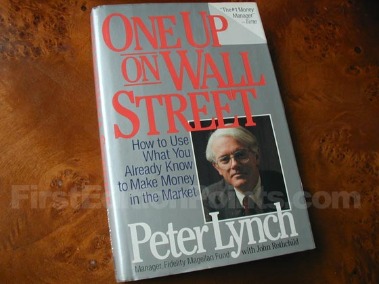Contents

Determining if there will be a bull or bear market takes time to evaluate, and the ups and downs can cancel out, leading to a flat market trend. Some investors try timing the market for better results but having a solid investment strategy with long-term goals can be more beneficial in the long run. When looking at market trends, it’s essential to evaluate performance over a period of time, not just reactions to events that may or may not be related to a changing market. When small changes occur, that can mean either a short-term event or a stock market correction which is a decline of 10% or more from the previous peak. A bull market refers to a situation when stock prices have risen by at least 20% from the last market drop and values are on the rise.


In a bull market, the increase in stock market prices boosts investor confidence, which causes investors to put their money in the market in the hope of obtaining a profit. A bear market is when stock prices on major market indexes, like the S&P 500 or Dow Jones industrial average , fall by at least 20% from a recent high. This is in contrast to a market correction, which is a fall of at least 10% and tends to be much shorter lived. But when they do, the bear market results in an average decline of 32.5% from the market’s most recent high. In 2020, investors had the rare experience of undergoing both a bear market and a bull market in rapid succession. In February and March, the S&P 500 index plummeted precipitously, dropping over 30% in a matter of days.
In 2022, concerns over an https://en.forexbrokerslist.site/ surge and potential rises of the federal funds rate caused a bear market. As a result of the financial crisis of 2007–2008, a bear market occurred between October 2007 and March 2009. The benchmark fell 37.8% until it hit its bottom of 7,286.27 on October 9, 2002. This bear market triggered the 2001 recession, compounded by the 9/11 terrorist attacks, which shut down stock exchanges and shocked the world. It’s generally accepted by industry experts that there have been around 26 bear markets since 1929.
Investing Tips
Although some https://topforexnews.org/ can be “bearish,” the majority of investors are typically “bullish.” The stock market, as a whole, has tended to post positive returns over long time horizons. That said, if you’re particularly concerned about stock market returns in retirement, you might opt for withdrawing only 3% of your portfolio. A financial advisor or tax expert can help you figure out the right withdrawal rate for your assets and risk tolerance.
Whether or not there is going to be a bull market or a bear market can only be determined over a longer time period. Similarly, a bear market rally (sometimes called “sucker’s rally” or “dead cat bounce”) is a price increase of 5% or more before prices fall again. Bear market rallies occurred in the Dow Jones Industrial Average index after the Wall Street Crash of 1929, leading down to the market bottom in 1932, and throughout the late 1960s and early 1970s. The Japanese Nikkei 225 has had several bear-market rallies between the 1980s and 2011, while experiencing an overall long-term downward trend. A bear market is a general decline in the stock market over a period of time. It includes a transition from high investor optimism to widespread investor fear and pessimism.
As opposed to wanting to maximise profits, they will switch to capital preservation mode. Aggregate funds in your Brokerage Account of less than $100 will remain in that account in cash.Earnings on Treasury Bills may be exempt from the state and local taxes. Please refer to your financial advisor or tax professional for advice. Brokerage services for alternative assets available on Public are offered by Dalmore Group, LLC (“Dalmore”), member of FINRA & SIPC. “Alternative assets,” as the term is used at Public, are equity securities that have been issued pursuant to Regulation A of the Securities Act of (“Regulation A”). These investments are speculative, involve substantial risks , and are not FDIC or SIPC insured.
Causes of market trends
Generally treasury bond futures are used in both these strategies because it is easier to go short and you have access to greater leverage in the treasury futures market. The most popular contracts used for these trades are the 2 or 5 year treasury on the short end of the yield curve and 10 year treasury futures on the long end. You can see how, as an investor, understanding these two scenarios is key to determining what to do with your money. Get Started Learn how you can make more money with IBD’s investing tools, top-performing stock lists, and educational content. There’s no specific percentage decline to signal a correction, but a 10% drop from the last high is the widely recognized benchmark.
- For example, a trader may say, “I am long on that stock” or “I am bullish on that stock.” Both statements mean they believe prices will rise.
- This website is free for you to use but we may receive commission from the companies we feature on this site.
- The bear market, then, is measured retrospectively from the recent highs to the lowest closing price, and its recovery period is the lowest closing price to new highs.
- These investments are speculative, involve substantial risks , and are not FDIC or SIPC insured.
- Angling towards investments like ETFs and bonds might instead be in order.
In general, stock prices tend to drop when their supply level exceeds the demand from potential buyers. It’s also important to realize that economic activity may not always align with the asset classes or index prices you’re using to judge a bear or bull market. SpeculatorsA speculator is an individual or financial institution that places short-term bets on securities based on speculations. For example, rather than focusing on the long-term growth prospects of a particular company, they would take calculated risks on a stock with the potential of yielding a higher return. In the first phase, Investor sentiment and prices of securities are very high, but the investors are extracting maximum profits and exiting the market.
The https://forex-trend.net/ market is characterized by strong demand and weak supply for securities. In a bull market, the ideal thing for an investor to do is to take advantage of rising prices by buying stocks early in the trend and then selling them when they have reached their peak. The key determinant of whether the market is bull or bear is not just the market’s knee-jerk reaction to a particular event, but how it’s performing over the long term. Small movements only represent a short-term trend or a market correction.
How should investors react to a bull market?
The longest bull run in history began in March, 2009, on the S&P 500, following the 2008 recession, and carried for almost exactly 11 years, ending with the onset of the pandemic in March, 2020. Get stock recommendations, portfolio guidance, and more from The Motley Fool’s premium services. Volatility profiles based on trailing-three-year calculations of the standard deviation of service investment returns.
The Securities and Exchange Commission defines a bear market as a broad market index decline of 20% or more over at least two months. But Ms. Wong cautioned that while bull markets are good to investors, when they see asset prices consistently increasing “greed takes over. As Matt Lundy, The Globe and Mail’s economics reporter, noted in June, bull markets often stick around for long periods of time. According S&P Global Market Intelligence, the average bull market for the S&P 500 since the 1960s has run for 59 months – or almost five years – and posted average stock price gains of 165 per cent. On the S&P/TSX Composite, meanwhile, the average Canadian bull market lasted a little more than three years, according to data from Russell Investments, and saw stocks more than double in value on average.

Bear Market is defined as the market that is exactly opposite of the bull market. Equity investment options involve greater risk, including heightened volatility, than fixed-income options. Working with a financial professional can help you keep emotions in check, whether the market is a bull or a bear.
Growth stocks in bull markets tend to perform well, while value stocks are usually better buys in bear markets. Value stocks are generally less popular in bull markets based on the perception that, when the economy is growing, “undervalued” stocks must be cheap for a reason. Rising GDP denotes a bull market, while falling GDP correlates with bear markets. GDP increases when companies’ revenues are increasing and employee pay is rising, which enables increased consumer spending. GDP decreases when companies’ sales are sluggish and wages are stagnant or declining. Bull and bear markets are partly a result of the supply and demand for securities.
This gives an indication that the indexes will move to downward and according to that, all the asset class will go down up to a certain level for a period of time. It might be said that the prevailing sentiment of investors who expect a bear market is fear. That fear, specifically, is that a coming downturn will wipe out wealth.
Because the market’s behavior is impacted and determined by how individuals perceive and react to its behavior, investor psychology and sentiment affect whether the market will rise or fall. Stock market performance and investor psychology are mutually dependent. In a bull market, investors willingly participate in the hope of obtaining a profit.
This is a classic example of a risky proposition which resulted in a permanent loss because fundamental details of the company were ignored at the time of investing in it. Ideally, an investor should have checked if there was value or not in the stock before buying. During a bear phase, the prices fall, and everything declines, leading to a downward trend.
